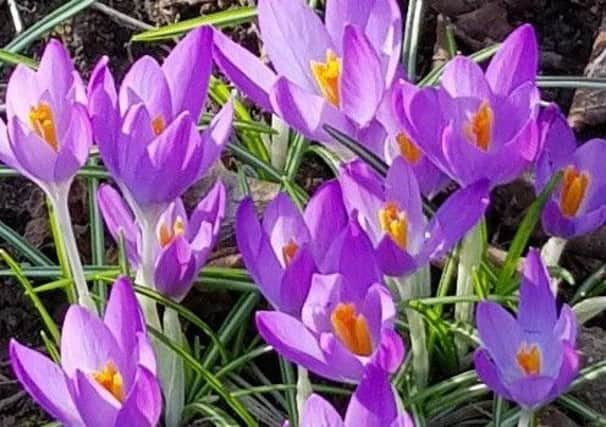Dwarf bulbs spread cheer ahead of spring


Winter days are bearable when we enjoy the presence of tough perennial shrubs whose colourful bark, stems and foliage illuminate our borders. Some offer fragrant flowers, and early herbaceous perennials at ground level add to the display; hellebore and lungwort for example.
But nothing raises expectation more than the early appearance of bulb shoots that carry the promise of a winter extravaganza. Six bulbous characters are stars of my late winter show. In order of appearance they are; winter aconite (eranthis), cyclamen coum, Galanthus nivalis (snowdrop), crocus species, iris reticulata and dwarf narcissus.
Advertisement
Hide AdAdvertisement
Hide AdWe refer to them all as bulbs, but technically they’re a mixture of corms, tubers, rhizomes, pseudo and true bulbs, all storage organs capable of performing year on year.
Eranthis tubers planted in October bring patches of yellow flowers set against green bracts in mid-January. The leaves appear as the blooms fade. They also lend themselves to pot-grown displays.
The flowers of cyclamen coum rise barely 5cm above the ground, but last from January to mid-March. What a welcome sight they are. The tuber they emerge from increases in size each year, is unbelievably hardy and lies just below soil level.
Irises exist in a range of colours and heights. They can be well over 1m tall or barely 15cm, but a standard flower formation relates to them all; three outer and three inner petals. Two of my dwarf favourites started to bloom last week; I. reticulata, which is a bluish purple, and the yellow I. danfordiae. Both are fragrant.
Advertisement
Hide AdAdvertisement
Hide AdSmall groups of crocus tommasinianus are always early performers and this year ours were blooming at the beginning of February. The main thrust of spring varieties is anticipated in mid-March.
Although there are taller narcissi cultivars in this garden, some quite fragrant, it’s the dwarf varieties that are favoured because they flower so early and keep their heads down when March winds arrive. Minnow, Jetfire, Hawera and Rip-Van-Winkle, planted in groups, certainly make a visual impact.
Glorious though these bulbs are, they’re ostensibly supporting acts alongside the iconic snowdrop (Galanthus). Perhaps it’s the lily-white flowers shining through the February gloom, or the sheer swathes of them.
Like the first swallow sighting of summer, they carry a message of hope, spring is on the way!